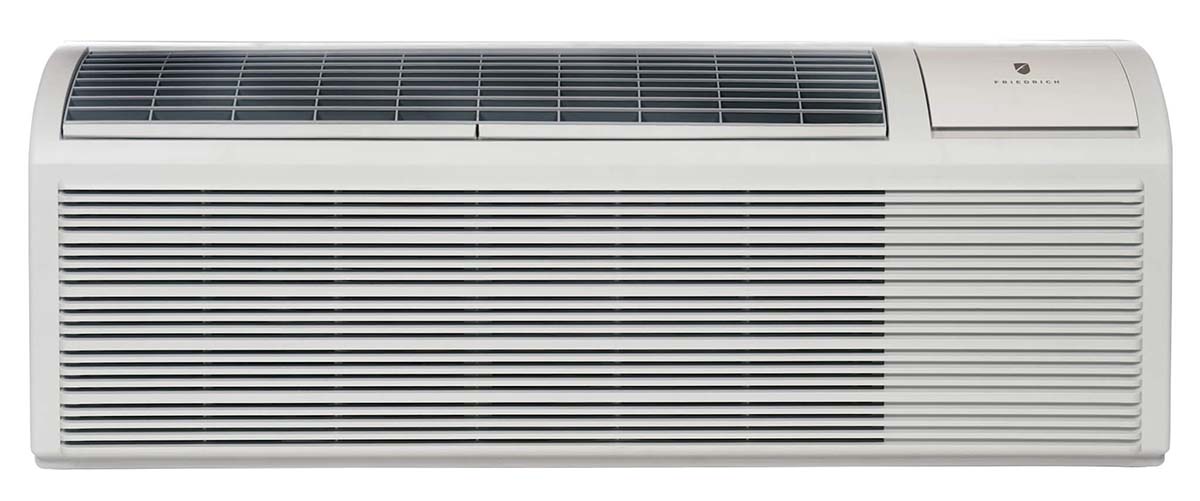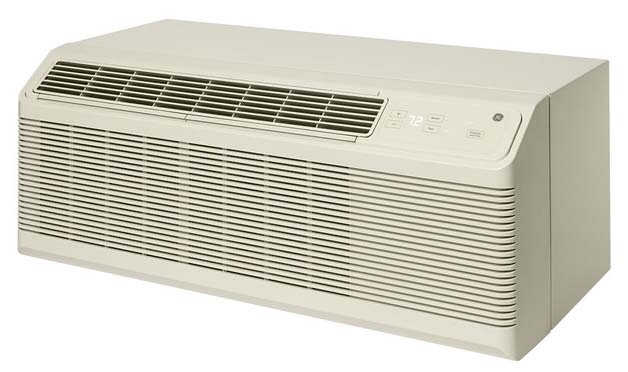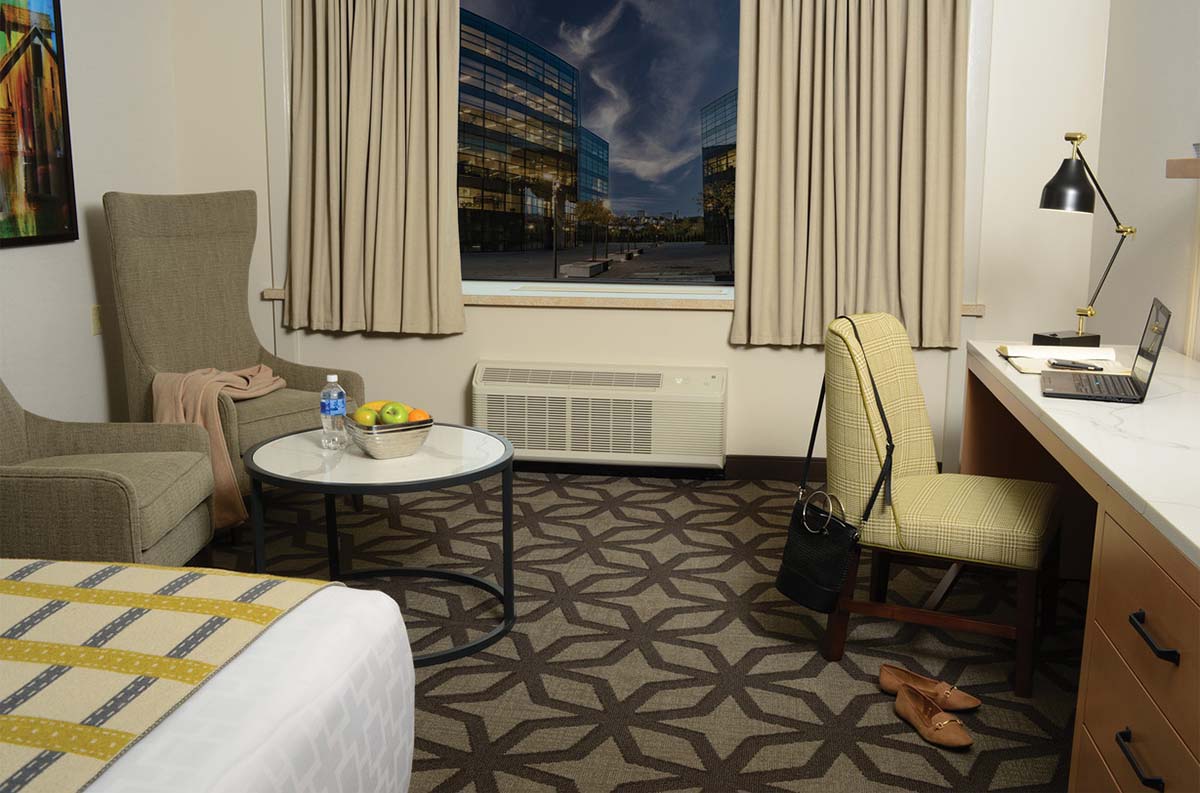Of the many impacts COVID-19 had on the HVAC industry, the one that resonated most with the average American was a heightened awareness of the importance of IAQ.
“While the exceptional (pandemic) IAQ demand has generally subsided, it did leave a lasting impact, and some hoteliers are finding creative ways to capitalize off the added consumer interest in clean air,” Jerad Adams, director of commercial product management at Friedrich Air Conditioning, told ACHR NEWS.
Now, several years post-pandemic, the hospitality industry has adopted plans to increase their air quality, because as it turns out, travelers are demanding to have high indoor air quality if they are going to be forking over their hard-earned money.
The industry is also benefitting from people engaging in “wellness travel,” meaning that IAQ is still playing a huge role in the tourism industry. To some, that may seem like just another buzzword, but Adams said it’s something hotels need to give serious consideration.
“While some skepticism remains, pandemic initiatives like Hilton’s Clean Room program have continued to create unparalleled consumer awareness while placing significant pressure on other hoteliers to adapt,” Adams said.
Ways to Improve
With IAQ becoming a higher priority for the hospitality industry, the HVAC industry continues to innovate to bring solutions, both big and small, that can help a hotel meet its goals.
Adams said that hoteliers seek IAQ product education and can easily get lost in various third-party options and technologies, a fact that made Friedrich take a different approach.
“We are allowing our customers to utilize factory-certified IAQ accessories that have been pre-selected and tested to meet our equipment’s performance criteria while addressing poor air quality in the room, near the source,” Adams said. “In-room applications also reduce the heavy cost burden and labor of installing whole building systems solutions and dedicated outdoor air systems.”
Adams said Friedrich is heavily communicating the benefits of FreshAire IAQ in-room technology to hoteliers so that they can better market the benefits to their guests.
“We see very quick ROI opportunities, as guests are willing to pay a small nightly premium for a healthy, clean air-certified room,” Adams said.
At Carrier, there are several quiet and efficient solutions that can help meet these goals, regardless of climate or environmental conditions.
“Ventilation and filtration are key considerations for improved indoor air quality. Air handlers, controls, rooftop units, and duct units all play a role in improving the intake of fresh outdoor air and helping filter out particulates to improve air quality,” said Adam Gaitsch, associate director – strategic accounts, hospitality, Carrier.
For smaller spaces, like conference and guest rooms, Gaitsch said there are other options, including WiFi-enabled Smart Air Purifiers, which have the ability to be plugged into electrical outlets and aid in improving IAQ with real-time monitoring.
There are also Packaged Terminal Air Conditioners (PTACs), which are self-contained units that are typically installed through a wall, that can be used in lieu of running air purifiers in every room.

UPGRADE PTACs: PTACs, which are self-contained units that are typically installed through a wall, can be used in lieu of running air purifiers in every room. (Courtesy of Friedrich)

HEAT PUMPS: This GE heat pump unit, with makeup air and UV-C, can be used as an alternative to running air purifiers in every room. (Courtesy of GE)
GE’s Zoneline Heat Pump Unit with Makeup Air and UV-C incorporates a high-powered LED array with UV-C light technology targeting the fan blade where most air movement occurs.

KEEPING IT CLEAN: Some PTACs, like GE’s Zoneline, incorporate a high-powered LED array with UV-C light technology targeting the fan blade where most air movement occurs. This design effectively reduces airborne virus concentrations, achieving an average 93.9% reduction within 180 minutes. (Courtesy of GE)
“This design effectively reduces airborne virus concentrations, achieving an average 93.9% reduction within 180 minutes,” said Rob Koller, commercial director, commercial a/c at GE Appliances Air & Water Solutions. “Furthermore, the unit’s makeup air introduces fresh outdoor air into the hotel room, diluting indoor pollutants like carbon dioxide, volatile organic compounds (VOCs), and odors. This is especially important in hotel rooms, where windows are often sealed and the only ventilation comes from the HVAC system.”
If humidity is a problem, a fairly common phenomenon for any hospitality building located near a coast, there’s also the GE Zoneline Perfect Control PTAC, which uses inverter technology, a variable-speed compressor, and onboard sensors to monitor temperature, humidity, and room occupancy, automatically adjusting the unit to maintain ideal conditions.
“This helps reduce the risk of mold growth and dust mites, which can negatively impact indoor air quality and guest comfort,” Koller added.
Making the Sale
There are obviously many different solutions and approaches to improving IAQ at hotels, but first, a contractor needs to make the pitch and close the sale.
After selecting a system, the next best step is to lean on the manufacturer for some assistance.
“Contractors can partner with manufacturers to receive the best sales support for specific products. This includes research and claims to back proposed upgrades as well as technical training to highlight installation and service benefits. GE Appliances Air & Water Solutions offers these benefits as part of its Pro Solutions Partner Program, for example,” Koller said. “However, contractors can also assess the hotel’s current HVAC system and identify any areas that need improvement, such as high humidity and mold risk. Coupled with research about how more guests are looking for clean air, the contractor can effectively sell these upgrades to a hotel.”
Adams said Friedrich has embraced ASHRAE and other scientific recommendations for how to best achieve exceptional indoor air quality by addressing not only advanced make-up air and filtration but also integrating sophisticated air purification and UV-C lighting capabilities.
“Friedrich FreshAire IAQ made Friedrich the first company in the U.S. to offer complete and effective room-by-room a/c solutions that meet rigorous standards for delivering safer, healthier indoor air quality with factory-certified options,” Adams said. “The FreshAire IAQ portfolio enables a contractor to make indoor air quality recommendations much easier with factory certification and marketing support material.”
Carrier also has a team of experts available for site assessments and to discuss which solutions may be best for any specific building.
Small Improvement, Retrofits, and Large-Scale Investments
“There is no one single strategy for helping create and sustain a healthier hotel environment. Carrier offers a layered approach with available expert guidance to help each location find the appropriate solution based on their building and guest needs,” Gaitsch said. “One potential approach is to work towards eliminating or reducing recirculation of indoor air. Carrier’s WeatherMaker rooftop units provide a flexible and energy-efficient solution by increasing the intake of fresh outdoor air. And the Agion-coated Aero 39M air handling unit helps inhibit bacterial and microbial growth on the interior of the unit.”
For smaller scale projects, Gaistch said contractors could offer upgrades to more efficient filters, such as those rated MERV-13 and higher.
For large-scale improvements, Koller said an overhaul to the entire HVAC system is certainly an option, but it also does not have to be done all at once.
“By upgrading a piece of equipment that is already in the room, the hotel is able to satisfy future guests with comfortable indoor air without disrupting the livable area of the room or causing any interruption in service,” Koller said. “A smaller-scale investment that could be better suited to retrofits is upgrading existing PTACs with UV-C light technology. This is an option for Zoneline PTAC models AZ45/65 W5 and beyond.”
Adams also said there is a plethora of different investment options, starting with in-room applications, which reduce the heavy cost burden and labor of installing whole building systems solutions and dedicated outdoor air systems.
“ASHRAE has continued to make solid recommendations that hold the industry standard. IAQ technology; filtration, ventilation, air purification, and UV for HVAC has now been readily available for over a decade. However, the COVID-19 pandemic increased consumer awareness driving hotelier demand and propelling us (OEMs) into offering more fully integrating IAQ accessories with our equipment,” Adams said. “That demand created factory-approved and factory-installed IAQ options.”
For Friedrich, he said, that means giving hoteliers options at initial installation, replacement opportunities, or retrofitting upgrades.
“Fundamentally, we don’t believe that baseline technology has advanced much, IAQ manufacturers may disagree. However, it has rapidly evolved in OEM integration. We now work directly with IAQ manufacturers and suppliers to ensure the product meets its full capabilities in our equipment while not eroding system performance. You will continue to see this, as an industry, in all future HVAC equipment.”








